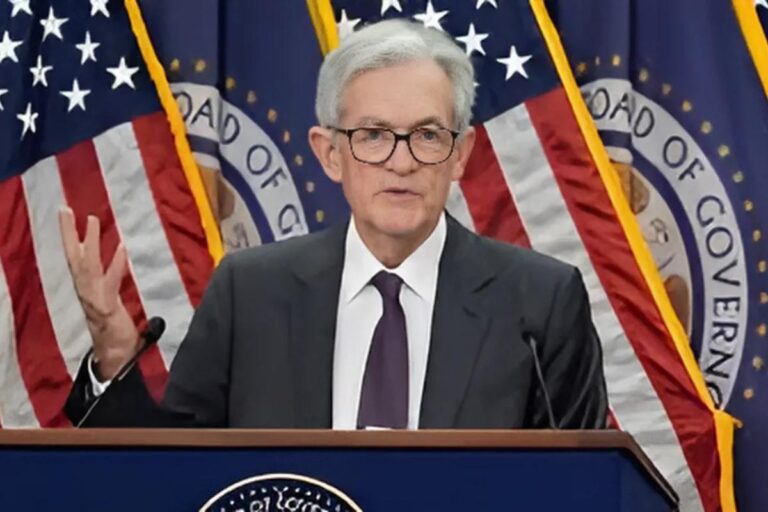Retail heavyweight cites tariff costs; maintains full-year outlook as sales and e-commerce momentum hold
Walmart signaled that U.S. shoppers are likely to see higher prices starting late May and into June as tariff pressures build, even as the company reported better-than-expected comparable sales and a profitable quarter for its e-commerce business. The retailer also declined to provide second-quarter profit guidance, pointing to a widening range of near-term outcomes tied to shifting trade policy and costs. Still, it kept its full-year sales and earnings outlook unchanged for fiscal 2026, suggesting management expects to navigate the volatility over a longer horizon.
Key takeaways at a glance
- Prices in U.S. stores are likely to rise beginning late May and certainly by June, driven by tariff costs, Walmart executives said.
- Q1 U.S. same-store sales rose 4.5%, topping analyst expectations; transactions and average ticket both increased.
- U.S. e-commerce sales grew 21% (22% globally), with Walmart’s online unit delivering its first full quarter of profitability, supported by higher-margin advertising and marketplace businesses.
- Quarterly adjusted EPS was $0.61 versus $0.58 expected; net sales rose 2.5% to $165.6 billion.
- Company withheld Q2 operating income and EPS guidance but reaffirmed full-year sales growth of 3%–4% and adjusted EPS of $2.50–$2.60 for fiscal 2026.
Why Walmart is raising prices now
Walmart’s leadership was direct: tariff expenses have become too substantial to fully absorb within the company’s notoriously thin retail margins. CFO John David Rainey said customers should begin noticing price hikes at the end of May and, more definitively, in June. CEO Doug McMillon emphasized that Walmart would try to keep prices “as low as possible,” but given the scope of tariffs even at reduced rates recently, the company cannot offset all the cost pressure.
That’s the crux. Retailers can push suppliers, streamline logistics, and find efficiencies. But there’s a limit. Analysts echoed that reality, noting Walmart’s scale gives it more levers than most, yet some demand impact from higher prices is likely, even if a broad collapse in consumption isn’t.
Guidance pause for Q2what it signals

Here’s the kicker: Walmart stepped back from providing second-quarter operating income growth and earnings per share guidance. The company framed the decision around near-term unpredictability, especially regarding tariffs, which have sown volatility across global trade. That said, it did not retreat from its full-year outlook. Management kept its projection for 3%–4% sales growth and adjusted EPS of $2.50–$2.60 for the fiscal year ending January 2026, suggesting confidence that the turbulence may smooth out across the remainder of the year.
Some market watchers consider the restraint reasonable, if not prudent. The company is serving as a bellwether for U.S. consumer health, and with economic signals mixedconsumer sentiment ebbing, and GDP contracting in Q1 after several years of visibility for a single quarter can get cloudy. The longer runway, Walmart implied, looks more manageable.
Q1 performance: steady foot traffic, bigger baskets
Funny thing is, while signaling higher prices ahead, Walmart posted a healthy set of first-quarter numbers:
- U.S. same-store sales up 4.5%, surpassing the 3.94% consensus estimate.
- Transactions grew 1.6%, while average ticket rose 2.8%, indicating shoppers bought both more items and slightly pricier baskets.
- Categories driving demand included dairy and pantry goods, fresh food, and personal care staple items that households prioritize even in tighter environments.
- Net sales increased 2.5% to $165.6 billion, just shy of estimates, while adjusted EPS came in at $0.61, above the $0.58 average expectation.
The message underneath: core demand remained resilient, with everyday essentials pulling weight as shoppers navigated budgets more carefully.
E-commerce milestone: profitability turns a corner
Believe it or not, Walmart’s e-commerce unit delivered its first full quarter of profitability. That shift wasn’t only about volume; it was also about mix. Higher-margin businessesonline advertising, and marketplace services played a bigger role in the result. U.S. e-commerce sales climbed 21%, and globally the growth was a touch stronger at 22%.
The company is signaling that its digital flywheel, with more third-party sellers, more advertising inventory, richer data, and faster fulfillment, produces profit, not just growth. For a retailer of Walmart’s size, that matters because a profitable online engine can support sharper pricing and a broader assortment over time.
Outlook: conservative near term, steady full year
Walmart expects consolidated net sales growth of 3.5%–4.5% in the second quarter, a bit above consensus expectations. But it declined to forecast Q2 operating income and EPS again, an acknowledgment of heightened uncertainty tied to tariffs and potential consumer reactions to price changes. Even so, the full-year view remained intact: 3%–4% sales growth and adjusted EPS of $2.50–$2.60 for fiscal 2026.
In other words: cautious immediately, confident overall.
Analyst perspective and competitive positioning
External analysts suggested Walmart is comparatively well-positioned to manage tariff-related costs. Its size, supplier relationships, and breadth across categories could allow it to spread price increases strategically across the assortment, which might be easier for customers to digest. The consensus wasn’t Rosyome demand destruction is probablebut it also wasn’t dire. A “complete wreck,” as one economist put it, seems unlikely.
And that raises a competitive point. If Walmart can absorb more of the tariff shock than smaller chains, its relative price leadershipalready a core brand promisecould widen. The company also kept its annual guidance in place while others in the sector have reduced or withdrawn full-year views during the trade war period, a signal of operational confidence even as macro conditions wobble.
Macro backdrop: shoppers are cautious, and the economy shows strain
The broader economic canvas is complicated. U.S. consumer sentiment fell for the fourth straight month in April, and GDP contracted in the first quarter for the first time in three years. That combination of confidence and shrinking output naturally weighs on retail planning and demand forecasting. When budgets tighten, consumers trade down, delay discretionary purchases, and concentrate spending on staples. Walmart, a bellwether for those patterns, is often among the first to pick up the shift in real time.
What price increases could look like
Walmart did not detail product-specific adjustments, but the timing guidance was explicit: price increases starting late May and into June. Given the product mix highlighted in dairy, pantry, fresh foods, personal care, and household essentials will likely remain priority areas for competitive pricing discipline. However, tariffs can affect a host of imported goods across general merchandise categories, where adjustments may be more visible. The company emphasized its intention to minimize increases where possible, while acknowledging that tariffs at current levels are too heavy to fully absorb.
Strategic levers Walmart can pull
Even with rising costs, Walmart has several ways to blunt the impact:
- Supplier negotiations and diversified sourcing to reduce unit costs where feasible.
- Operational efficiencies across distribution, logistics, and store-level processes to improve productivity.
- Mix shift toward higher-margin revenue streamsdigital advertising, and marketplace feeswhich can subsidize sharper pricing in sensitive categories.
- Inventory and assortment optimization, focusing on items with stable demand and favorable margins to maintain value perception while protecting profitability.
These tactics won’t erase tariff-driven inflation, but they may slow its pass-through.
E-commerce profitability: why it matters now
For years, e-commerce in mass retail meant quick growth and thin margins. This quarter, Walmart showed another path: expanding online sales while improving margins, thanks to advertising and marketplace dynamics. That adds cushion. As tariffs push costs up, incremental profit from digital businesses can be redirected at least in part to hold prices lower where it matters most. The effect is subtle but significant: a more flexible P&L, better able to weather external shocks.
Investor context
Shares ticked up about 0.5% in pre-market trading on the results, and the stock has climbed more than 60% over the past year. Investors often look through short-term guidance ambiguity when long-term signalslike stable annual forecasts, e-commerce profitability, and sustained traffic growthpoint to durable gains. By withholding only Q2 profit guidance, while reiterating the full-year outlook, Walmart appears to be threading that needle: cautious now, constructive later.
What to watch in the coming quarter
- Pace and breadth of price increases as tariffs feed through the supply chain.
- Customer mix and basket trends: whether shoppers shift more toward staples and private labels as prices rise.
- E-commerce margin trajectory: Can advertising and marketplace growth continue to offset fulfillment costs at scale?
- Category-level performance, especially important in general merchandise, where discretionary demand is most sensitive to price changes.
- Any updates to tariff policy that might recalibrate Walmart’s pricing posture and guidance confidence.
If tariff pressures ease or if Walmart’s mitigation efforts outperform, outcomes could skew better than feared. If not, expect a measured pass-through to prices and a continued emphasis on essentials.
Bottom line
Walmart is preparing consumers for price increases tied to tariffs, while pausing on near-term profit guidance due to a widening set of possibilities. Yet the retailer’s fundamentals same-store sales, rising traffic, bigger baskets, and a newly profitable e-commerce operation, offer ballast. Holding the full-year forecast steady underlines that the company sees a path through the uncertainty, even if the next few weeks and months are tougher to predict.
Data points and statements sourced from company commentary, analyst insights, and reported results
- Price increases expected beginning late May and certainly by June; tariffs cited as the driver.
- CEO statement on narrow margins limiting the ability to absorb tariff costs fully.
- Analyst views: potential demand destruction but not a collapse; Walmart’s relative flexibility in spreading increases.
- Full-year outlook maintained: sales growth 3%–4%, adjusted EPS $2.50–$2.60 for fiscal 2026.
- U.S. same-store sales +4.5% vs. 3.94% expected; transactions +1.6%, average ticket +2.8%.
- Net sales $165.6 billion (+2.5%); adjusted EPS $0.61 vs. $0.58 expected.
- E-commerce: +21% U.S., +22% global; first full quarter of profitability backed by ads and marketplace.
- Q2 outlook: consolidated net sales growth 3.5%–4.5%; withholding Q2 operating income and EPS guidance due to uncertainty.
- Macro backdrop: Consumer sentiment fell for a fourth month in April; GDP contracted in Q1 for the first time in three years.
































